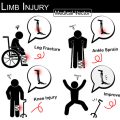1. Introduction: The Importance of Re-Integration for Veterans
When service members leave the military and return to civilian life in the United States, they face a unique set of challenges. Many veterans must adjust to new routines, find employment, reconnect with family and friends, and sometimes manage physical or emotional injuries. Re-integrating into civilian society is not always easy, and the journey can be overwhelming without the right support systems.
The Challenges Veterans Face During Transition
Every veteran’s experience is different, but some common obstacles include:
| Challenge | Description |
|---|---|
| Employment | Finding jobs that match their skills or adapting military experience to civilian roles can be tough. |
| Healthcare Access | Navigating the VA system and accessing necessary care—especially for those with disabilities—can be confusing. |
| Social Connections | Rebuilding relationships and creating a support network outside of the military is often challenging. |
| Mental Health | Adjusting to civilian life while managing stress, PTSD, or depression requires ongoing support. |
| Mobility & Independence | Physical injuries may require new ways to move around or perform daily tasks independently. |
Why Supporting Re-Integration Matters
Helping veterans successfully transition back into their communities is vital—not only for their well-being but for society as a whole. When veterans are able to live independently and feel included, they are more likely to thrive, contribute to their communities, and achieve personal goals. Providing effective tools and resources can make all the difference in helping them overcome obstacles and regain confidence in their everyday lives.
2. Overview of Assistive Technology Solutions
Assistive technology (AT) refers to any device, software, or equipment that helps people with disabilities perform tasks that might otherwise be difficult or impossible. For many veterans returning to civilian life, AT can play a major role in supporting independence and re-integration into the community. From improving mobility to enabling easier communication, these tools are designed to fit a variety of needs and lifestyles.
What Is Assistive Technology?
Assistive technology includes everything from simple tools like walkers and grab bars, to advanced solutions such as speech-to-text apps and smart home devices. The goal is always the same: help users accomplish daily activities more easily and safely.
Key Devices and Apps for Veterans
Many veterans use assistive technology to support daily living, mobility, and communication. Here’s a look at some common examples:
| Type | Description | Popular Examples |
|---|---|---|
| Mobility Aids | Help with walking or moving around independently | Wheelchairs (manual & power), prosthetics, walkers, scooters |
| Communication Devices | Assist with speaking, hearing, or reading | Speech-generating devices, text-to-speech apps (like Proloquo2Go), hearing aids |
| Daily Living Aids | Support self-care and household tasks | Grab bars, adaptive utensils, smart pill dispensers, dressing aids |
| Cognitive Support Tools | Aid memory, organization, and focus | Reminder apps (like Medisafe), voice assistants (Amazon Alexa), digital organizers |
| Sensory Aids | Enhance vision or hearing abilities | Screen readers (JAWS), magnifying devices, amplified telephones |
| Smart Home Technology | Increase control over home environments for safety and convenience | Smart thermostats, video doorbells (Ring), remote lighting controls |
How These Tools Help Veterans Every Day
Whether it’s navigating public spaces with a power wheelchair or using a smartphone app to communicate more effectively, assistive technologies empower veterans to live more independently. Many veterans also use smartphone apps specifically designed for their needs—such as VA Video Connect for virtual medical appointments or PTSD Coach for managing stress and anxiety.
Accessible Tech for All Needs
The range of available assistive technology means there’s likely a solution for almost any challenge a veteran may face during re-integration. By understanding what’s out there and how it can help, veterans can find new ways to connect with their communities, manage their health, and regain confidence in everyday life.
![]()
3. Enhancing Independence at Home and in the Community
Promoting Self-Sufficiency for Veterans
Assistive technology (AT) is a game-changer for veterans re-integrating into civilian life. By making daily tasks easier and more accessible, these tools help veterans gain confidence and independence both at home and in the community. Below, we explore how AT supports self-sufficiency in different aspects of life.
Independence at Home
For many veterans, returning home means adapting to new physical or cognitive challenges. Assistive devices can help with everything from mobility to communication. For example, smart home systems allow veterans to control lights, thermostats, and security with voice commands or smartphone apps. Adaptive kitchen tools and bathroom modifications, like grab bars and raised toilet seats, make self-care safer and more manageable.
| Area | Assistive Technology Example | How It Helps |
|---|---|---|
| Mobility | Wheelchair ramps, stair lifts | Makes moving around the house easier |
| Daily Living | Adaptive utensils, dressing aids | Enables independent eating and dressing |
| Home Control | Smart speakers, automated lighting | Allows control of environment without physical effort |
Accessible Transportation Solutions
Getting around town is essential for social life and work. Veterans can use adapted vehicles with hand controls or wheelchair lifts to drive themselves. For those who don’t drive, ride-sharing apps with accessibility features and public transit services that accommodate mobility devices make traveling more convenient.
Transportation AT Options:
- Modified vehicles: Hand controls, swivel seats, wheelchair-accessible vans.
- Transit apps: Real-time tracking of accessible buses or paratransit services.
- Ride-hailing: Options for wheelchair-friendly rides through Uber WAV or Lyft Access.
Building Social Connections
Staying connected is important for mental health. AT can bridge gaps by providing communication aids such as speech-generating devices or text-to-speech software for veterans with speech impairments. Smartphones and tablets with specialized apps help veterans join support groups, connect with friends, or participate in online communities safely from home.
Examples of Social AT Tools:
- Video calling devices: Easy-to-use screens for virtual visits with family and friends.
- Communication boards: Help non-verbal veterans express needs and feelings.
- Social media accessibility features: Voiceover and captioning improve online interactions.
Employment and Workplace Support
Returning to work is an important step toward independence. Assistive technology ensures that veterans can access job opportunities and perform their roles effectively. This may include adaptive keyboards for those with hand injuries, screen readers for visually impaired users, or ergonomic office furniture designed for comfort and safety.
| Workplace Challenge | Assistive Solution | Description |
|---|---|---|
| Lack of dexterity | Adaptive keyboards/mice | Makes typing and computer use easier |
| Sensory limitations | Screen readers/magnifiers | Aids reading digital content aloud or enlarges text/images |
| Pain/fatigue issues | Sit-stand desks/ergonomic chairs | Adds flexibility and comfort during long work hours |
By leveraging assistive technology across these key areas—home life, transportation, social connections, and employment—veterans can build greater independence and thrive as active members of their communities.
4. Addressing Physical and Mental Health Challenges
Understanding the Unique Needs of Veterans
Many veterans face a wide range of physical and mental health challenges after their service. Common issues include mobility limitations, loss of limbs, chronic pain, traumatic brain injuries (TBI), and mental health conditions like post-traumatic stress disorder (PTSD) and depression. These challenges can make daily life difficult and impact a veteran’s ability to work, socialize, or live independently.
How Assistive Technology Helps
Assistive technology offers practical solutions for veterans to manage these challenges more effectively. Whether it’s through high-tech devices or simple tools, these technologies support veterans in regaining control over their lives.
Physical Disabilities
| Challenge | Assistive Technology Solution | Benefit |
|---|---|---|
| Mobility Issues | Powered wheelchairs, exoskeletons, adaptive vehicles | Improves independence and freedom of movement |
| Loss of Limbs | Advanced prosthetics with sensory feedback | Restores some natural function and confidence in daily activities |
| Chronic Pain | Pain management apps, wearable therapy devices | Provides non-invasive options for pain relief and tracking symptoms |
Mental Health Conditions
| Condition | Assistive Technology Solution | Benefit |
|---|---|---|
| PTSD & Anxiety | Mental health apps, virtual reality therapy, meditation headsets | Offers coping tools anytime, anywhere; can reduce stress and anxiety triggers at home or on the go |
| TBI (Traumatic Brain Injury) | Cognitive aids like memory apps, reminder devices, speech-to-text software | Helps manage memory loss and communication difficulties, making daily tasks easier to handle |
| Depression & Isolation | Online peer support platforms, telehealth services, activity trackers | Keeps veterans connected to support networks and encourages healthy routines |
The Importance of Personalized Solutions
No two veterans have exactly the same needs. That’s why it’s crucial for assistive technology to be personalized. Health professionals often work with veterans to choose the right combination of tools that fit their lifestyle and goals. This approach helps veterans build confidence as they re-integrate into civilian life.
5. Access, Training, and Support for Veterans
Veterans face unique challenges as they transition back into civilian life, and assistive technology can make a huge difference in their independence and well-being. However, getting the right tools is only part of the journey. Knowing where to find support, how to get training, and what organizations can help is just as important. Below, we review key resources and programs designed to help veterans access, learn about, and effectively use assistive technologies.
Key Resources for Veterans
| Resource | Description | Website/Contact |
|---|---|---|
| Department of Veterans Affairs (VA) | The VA provides assessments, funding, and training for a wide range of assistive devices tailored to veterans’ needs. | va.gov |
| America’s VetDogs | Offers guide dogs and service dog programs that support veterans with physical or mental health challenges. | vetdogs.org |
| Disabled American Veterans (DAV) | Helps veterans access benefits, including those related to assistive technology, and offers peer support. | dav.org |
| Easterseals | Provides technology training and rehabilitation services focused on helping veterans gain independence. | easterseals.com |
| Wounded Warrior Project (WWP) | Connects veterans with adaptive equipment and peer networks for skill-building and community integration. | woundedwarriorproject.org |
Training Programs for Assistive Technology
Knowing how to use assistive technology is essential for success. Many organizations offer hands-on training, either in person or online. Some VA hospitals have dedicated occupational therapists who work one-on-one with veterans. Other groups, like Easterseals or local Centers for Independent Living, run workshops or group sessions to teach everything from voice-controlled devices to mobility aids.
Popular Training Topics:
- Setting up adaptive home environments (like smart lighting or accessible kitchens)
- Learning to use communication devices or apps for speech impairments
- Navigating public spaces with mobility devices or service animals
- Using prosthetics or exoskeletons safely and effectively
- Accessing computers or smartphones with adaptive software
Community Organizations Offering Ongoing Support
Support doesn’t end after the first training session. Peer mentors, veteran support groups, and community resource centers provide ongoing help. These organizations create a sense of belonging while answering questions about device upgrades, troubleshooting problems, or connecting veterans with funding sources.
Examples of Community Support:
- Pilot programs: Some communities offer “try before you buy” options so veterans can test out different technologies.
- User groups: Regular meet-ups let veterans share tips and experiences using new devices.
- Family education: Training isn’t just for veterans—family members can also learn how best to support their loved ones at home.
- Counseling services: Address emotional adjustment as well as practical skills related to new technologies.
Tapping Into Local Resources
If you are a veteran—or know someone who is—reaching out to your nearest VA office is a good first step. Many states also have Assistive Technology Act Programs (ATAP) that loan equipment or provide demonstrations. Don’t hesitate to ask your healthcare provider about referrals or look for local nonprofit partners specializing in veteran services. With the right access, training, and support network, assistive technology becomes a powerful ally in regaining independence and confidence.

